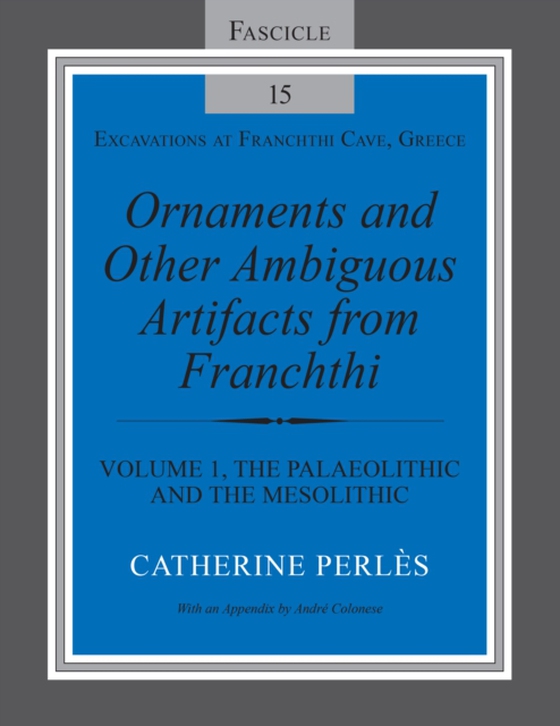
Ornaments and Other Ambiguous Artifacts from Franchthi e-bog
127,71 DKK
(inkl. moms 159,64 DKK)
A fresh and authoritative study of the ornaments recovered from the Franchthi Cave sediments, with illustrations included.The famous Franchthi Cave excavations in Greece brought to light an exceptionally long sequence of ornaments, spanning from the earliest Upper Palaeolithic to the end of the Neolithic. This volume focuses on the Palaeolithic and Mesolithic ornaments and ornamental species, w...
E-bog
127,71 DKK
Forlag
Indiana University Press
Udgivet
10 januar 2018
Genrer
1DVG
Sprog
English
Format
epub
Beskyttelse
LCP
ISBN
9780253031853
A fresh and authoritative study of the ornaments recovered from the Franchthi Cave sediments, with illustrations included.The famous Franchthi Cave excavations in Greece brought to light an exceptionally long sequence of ornaments, spanning from the earliest Upper Palaeolithic to the end of the Neolithic. This volume focuses on the Palaeolithic and Mesolithic ornaments and ornamental species, which constitute one of the largest collections in Europe for these periods combined.Franchthi is one of the few identified production centers for ornaments, which are overwhelmingly dominated by marine molluscs. The detailed publication of these collections (Cyclope neritea, Antalis sp. and Columbella rustica) will be useful to all malacologists and specialists in ornaments working around the Mediterranean. These reference collections, coupled with the examination of manufacturing and wear traces on the archaeological specimens, allow a detailed reconstruction of the whole production cycle from procurement to discard. The systematic association of unworked, freshly worked, and very worn shells suggests that the ornaments mostly served for the production or rejuvenation of embroidered garments. Despite the richness of the assemblages and varied local resources, the range of ornament types is surprisingly narrow and fundamentally stable through time. The ornaments from Franchthi Cave therefore paint a different portrait of the European Upper Palaeolithic and Mesolithic, one based on regional cultural continuity.
 Dansk
Dansk

